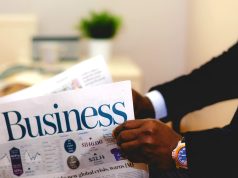New Yorkers’ average student loan balance rose by 3.9 percent from the previous year to $37,600 as of June 2020, according to newly available data from the Federal Reserve Bank of New York. That figure has increased 20.1 percent since 2016. The average balance owed by New Yorkers was 5th highest among the states. The table below provides figures on average balances and delinquency rates for student loan borrowers in New York and other states.
| Average Amount Owed | Percentage of Borrowers Delinquent | |
|---|---|---|
| Alaska | $33,000 | 11% |
| Alabama | $36,800 | 13% |
| Arkansas | $31,900 | 13% |
| Arizona | $35,700 | 12% |
| California | $36,800 | 10% |
| Colorado | $36,100 | 9% |
| Connecticut | $35,700 | 9% |
| Delaware | $36,300 | 9% |
| Florida | $37,900 | 12% |
| Georgia | $41,100 | 13% |
| Hawaii | $34,900 | 11% |
| Iowa | $29,600 | 9% |
| Idaho | $33,500 | 9% |
| Illinois | $37,300 | 9% |
| Indiana | $32,200 | 12% |
| Kansas | $32,600 | 10% |
| Kentucky | $32,800 | 13% |
| Louisiana | $34,700 | 13% |
| Massachusetts | $34,400 | 7% |
| Maryland | $42,500 | 10% |
| Maine | $32,200 | 9% |
| Michigan | $35,700 | 12% |
| Minnesota | $32,100 | 8% |
| Missouri | $35,000 | 11% |
| Mississippi | $36,600 | 15% |
| Montana | $31,700 | 9% |
| North Carolina | $36,200 | 11% |
| North Dakota | $27,800 | 7% |
| Nebraska | $31,400 | 8% |
| New Hampshire | $33,400 | 8% |
| New Jersey | $36,500 | 8% |
| New Mexico | $33,600 | 14% |
| Nevada | $34,700 | 13% |
| New York | $37,600 | 7% |
| Ohio | $34,300 | 12% |
| Oklahoma | $31,400 | 13% |
| Oregon | $36,900 | 12% |
| Pennsylvania | $34,700 | 9% |
| Rhode Island | $32,400 | 9% |
| South Carolina | $36,600 | 13% |
| South Dakota | $28,400 | 8% |
| Tennessee | $35,500 | 13% |
| Texas | $32,700 | 12% |
| Utah | $32,100 | 8% |
| Virginia | $38,100 | 9% |
| Vermont | $34,300 | 6% |
| Washington | $35,000 | 9% |
| Wisconsin | $30,700 | 9% |
| West Virginia | $31,800 | 14% |
| Wyoming | $29,700 | 9% |
.
Debt among borrowers with outstanding balances in June 2020. Delinquent borrowers have payments that are late 90 days or more. Student loans include federal student loans and private student loans.
Source: Federal Reserve Bank of New York Consumer Credit Panel/Equifax.
The Coronavirus Aid, Relief and Economic Security (CARES) Act enacted in March 2020 suspended federal student loan payments and the accrual of interest on such loans through September 30, 2020. It also suspended the involuntary collection of payments on defaulted loans through wage garnishment and reductions of tax refunds and other federal benefits, among other relief measures for borrowers.
Executive action extended these emergency relief measures first through December 31, 2020 and again through January 31, 2021. The most recent federal stimulus legislation did not extend this deadline further.
The delinquency rate for New Yorkers (with past due accounts that are late 90 days or more) decreased from 11.1 percent in 2019 to 7.4 percent in 2020, a drop of a third, comparable to the declines of a quarter to a third seen in other states. The Federal Reserve Bank of New York noted that the lower rates of delinquency for payments 90 days late or more in June 2020 are “due to the administrative forbearance on federal student loans” directed by the CARES Act.
A survey by the Pew Charitable Trusts, conducted in late summer of 2020 and released in November, found that nearly 6 out of 10 borrowers who reported having paused their payments said that it will be somewhat or very difficult to resume their payments. With so many borrowers still out of work and experiencing financial insecurity, many may continue to pursue other options with their loan servicers in order to reduce their payments. At the time of the survey, 22 percent of borrowers had reached out to their loan servicers for more information about lowering their payments.
















